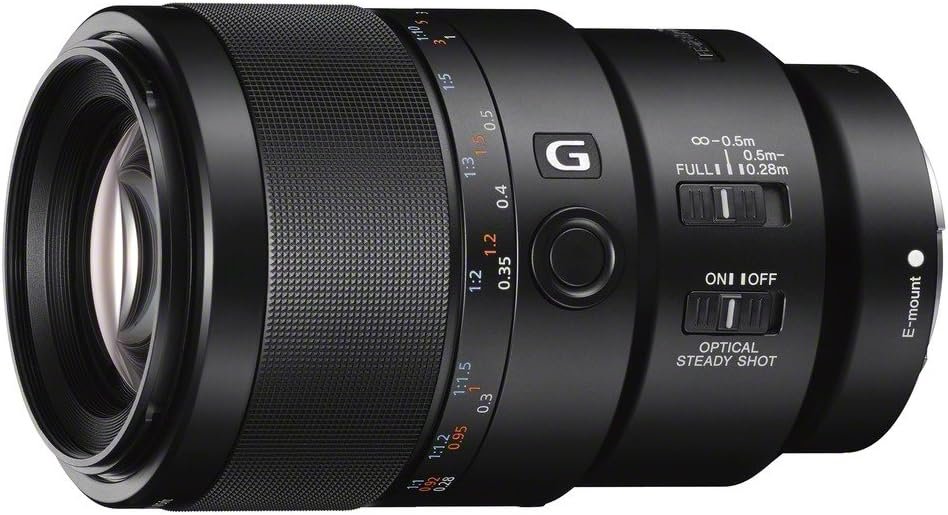Macro photography reveals a world of detail, texture, and wonder. To Sony shooters, snapping subjects like insects, flowers or even the fine details of common objects is both an art and a technical challenge. If you’re prepared to turn that small world into sharp focus, though, you’ll need the right macro lens.
This guide analyzes the best Sony macro lenses currently available, explaining their features and helping you choose one that fits your style and needs.
Overview of Sony Macro Lenses
Sony has a strong selection of macro lenses for its full-frame and APS-C models. Each lens is designed for specific types of photographers, whether hobbyists, amateurs or professionals. Below are the current options for macro lovers with Sony cameras.
Sony FE 90mm f/2.8 Macro G OSS

- Magnification Ratio: 1.0x (life-size)
- Autofocus: Yes, with Direct Drive SSM
- Image Stabilization: Yes (Optical SteadyShot)
- Aperture Range: f/2.8 to f/22
Sony FE 50mm f/2.8 Macro

- Magnification Ratio: 1.0x (life-size)
- Autofocus: Yes
- Image Stabilization: No
- Aperture Range: f/2.8 to f/16
Laowa 100mm f/2.8 2X Ultra Macro APO (Sony FE)
- Magnification Ratio: 2.0x
- Autofocus: No (manual focus only)
- Image Stabilization: No
- Aperture Range: f/2.8 to f/22
Each of these lenses has its particular strengths, making them more suitable in some situations or styles of shooting.
Key Features to Consider When Choosing a Macro Lens
Before diving into top picks, here are some of the features that matter most in a macro lens.
Magnification Ratio
A true macro lens has a 1.0x magnification ratio, which means it can reproduce subjects at life-size on the camera sensor. To achieve extreme levels of detail, you’ll want to ensure a magnification ratio of 1.0x or higher.
Autofocus Performance
Manual focusing is generally preferable for macro work (it’s more precise), but if you’re shooting moving subjects like insects, a lens with decent autofocus can be a godsend
Image Stabilization
Macro photography can be challenging hand-held because of camera shake. Lenses that feature image stabilization, such as Sony’s Optical SteadyShot, can help keep photos sharp at slow shutter speeds.
Build Quality and Weather Sealing
Macro lenses are frequently used outside for nature shots, so if you plan to shoot in adverse conditions, you need to consider durability and weather sealing.
Top Sony Macro Lenses
1. Sony FE 90mm f/2.8 Macro G OSS
The Sony FE 90mm f/2.8 Macro is frequently viewed as the gold standard macro lens for Sony. It covers greatness in sharpness, bokeh, and usability. Its 90mm focal length gives enough working distance; it’s the optimal reach for shooting things like insects, flowers, and other fragile subjects.
Key Features:
- Life-size (1.0x) magnification
- Optical SteadyShot image stabilization
- Silent and precise Direct Drive SSM Autofocus
- Dust and moisture-resistant design
Best For:
Photographers seeking the highest optical quality and reliability for professional macro work.
2. Sony FE 50mm f/2.8 Macro
A small and light design, this is the most affordable macro lens for Sony shooters looking to experiment with close-up photography without spending big. It has no image stabilization but is a good all-around close-up and general-purpose lens with its shorter focal length.
Key Features:
- Life-size (1.0x) magnification
- Compact and lightweight (236g)
- Affordable price point
Best For:
Beginner macro photographers or those looking for a lightweight, multi-purpose lens.
3. Laowa 100mm f/2.8 2X Ultra Macro APO (Sony FE)
The Laowa 100mm provides a 2x magnification ratio, letting you shoot effectively smaller subjects than life-size. Though it is a manual focus lens, its amazing image quality, and ultra-magnification capabilities have made it a go-to for serious macro shooters.
Key Features:
- 2x magnification ratio
- Apochromatic elements reduce chromatic aberration
- Manual focus with smooth adjustment
Best For:
Experienced macro photographers seeking unparalleled detail and unique close-up perspectives.
Comparison Table of Top Sony Macro Lenses
Here’s a quick comparison to see how these lenses stack up side-by-side:
| Lens | Magnification | Autofocus | Image Stabilization | Weight | Price |
|---|---|---|---|---|---|
| Sony FE 90mm f/2.8 | 1.0x | Yes | Yes (OSS) | 602g | $1,198.00 |
| Sony FE 50mm f/2.8 | 1.0x | Yes | No | 236g | $698.00 |
| Laowa 100mm f/2.8 | 2.0x | No | No | 638g | $499.00 |
Tips for Choosing the Right Lens
1. Consider Your Shooting Style
If your plan is to aim for outdoor shots or insects and wildlife, you’ll want as long a focal length from a lens as you can get (such as the Sony 90mm or Laowa 100mm). A 50mm lens will work fine for tabletop or product photography.
2. Think About Your Budget
If you’re merely getting started and want an affordable point of entry, the Sony FE 50mm f/2.8 is a fantastic choice. But if you want pro-grade gear, you can’t go wrong with the 90mm macro.
3. Evaluate Your Subject
If you need extremely close-ups, check out the Laowa 100mm with 2x magnification. The Sony FE 90mm, on the other hand, is an all-purpose design for macro and general photography work.
Bring the Macro World to Life
Macro photography is not just about capturing the details — it’s about capturing the story of the smallest thing. For both the budding macro-a-holic and the die-hard Sony snapper, having the right lens can take your work to another level.
For our recommendation? The Sony FE 90mm f/2.8 Macro G OSS is still the most well-rounded macro lens available in terms of quality, features, and usability, and it will be a great companion for most macro scenarios.
So, have you figured out which macro lens is right for you? Let other photographers know your favorite picks and shots in the comments below!
Related Posts: Sony Alpha 7000 Review: In-depth Review & Final Verdict




